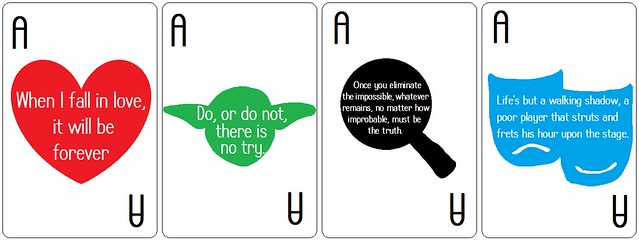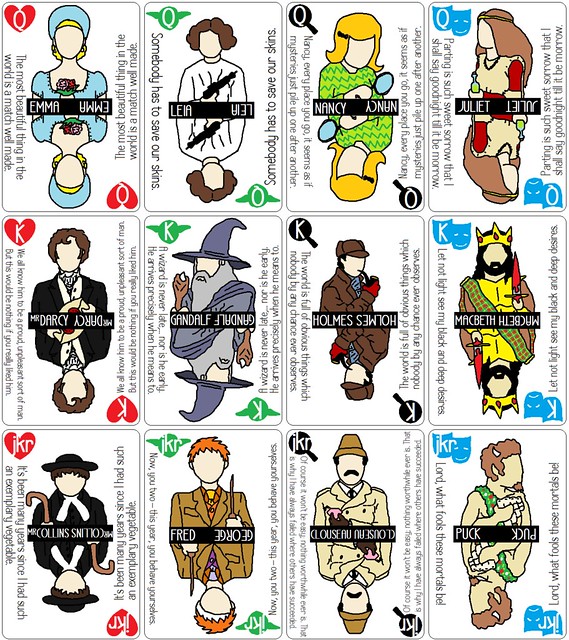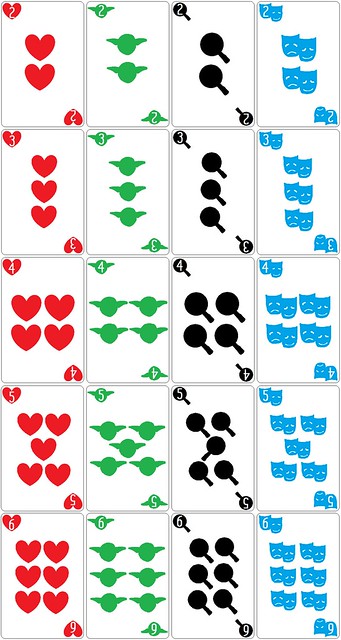


I've used papers before to sort students into groups at the start of class. Everyone either takes one as they come in or there is one at each desk. I did irreversible binomial chip flavours, ex. one person has "Salt and" the other has "Vinegar" and students had to find their partner. However; these were always hastily made before class (sometimes finished during!) and recycled shortly after. I wanted to make a permanent, more flexible solution.
Literature cards were born! This set is designed to have 36 cards, which divides easily into 2, 3, 4, 6, 9, and 12! I will shuffle them before class and give each student one to start and flexible grouping is a breeze.
- I want groups of four? Everyone pair up with people with the same number.
- Four large groups? Everyone make a group of the same suit.
- Groups of three? Ace to 3 of Hearts here, ace to 3 of Yodas here, etc.
- Make groups of six.
- Have each colour represent a certain point of view to take when responding to a text
Since I will be teaching grade 9 and 10 English this year, I want to really get my students excited for all that the world of literature has to offer. With these cards I hope to introduce students to some iconic genres and characters from literature, and hopefully make them curious too!
The traditional four suits are replaced by four genres:
- Hearts - Romance. I chose to use Jane Austen characters and quotes.
- Yodas - SciFi/Fantasy. I love this genre. It excites the imagination and is filled with allegory and social commentary.
- Magnifying Glasses - Mystery/Detective. It's easy to be drawn into a Who-Done-It. Foreshadowing abounds and reading can easily be connected to the glut of crime procedurals on TV.
- Masks - Drama. I chose Shakespeare quotes and characters since he is The icon of drama. This is language as art in an ideally non-written form.
Each genre has three face cards:
- King - An influential male character.
- Queen - An influential female character.
- Joker - A fool/jokester.
I will most likely have less than 36 students in my class and I'll tailor which cards I use to that number. If I have 28 students I'll remove the 5s and 6s for example.
I'm excited to give them a try. If you like the idea and want your own, click here and download them from my flickr set. They are creative commons, so please reference me and don't use them to make a profit.

